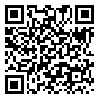Volume 4, Issue 4 (17 2005)
ijdld 2005, 4(4): 65-71 |
Back to browse issues page
Download citation:
BibTeX | RIS | EndNote | Medlars | ProCite | Reference Manager | RefWorks
Send citation to:



BibTeX | RIS | EndNote | Medlars | ProCite | Reference Manager | RefWorks
Send citation to:
Fakhrzadeh H, Ebrahimpour P, Pourebrahim R, Heshmat R, Noori M, Shafaee A et al . THE RELATION OF HYPERHOMOCYSTEINEMIA WITH IMPAIRED GLUCOSE TOLERANCE AND DIABETES (TEHRAN HOMOCYSTEINE SURVEY). ijdld 2005; 4 (4) :65-71
URL: http://ijdld.tums.ac.ir/article-1-395-en.html
URL: http://ijdld.tums.ac.ir/article-1-395-en.html
Hosein Fakhrzadeh * 
 1, Pantea Ebrahimpour
1, Pantea Ebrahimpour 
 , Rasool Pourebrahim
, Rasool Pourebrahim 
 , Ramin Heshmat
, Ramin Heshmat 
 , Masoumeh Noori
, Masoumeh Noori 
 , Alireza Shafaee
, Alireza Shafaee 
 , Bagher Larijani
, Bagher Larijani 


 1, Pantea Ebrahimpour
1, Pantea Ebrahimpour 
 , Rasool Pourebrahim
, Rasool Pourebrahim 
 , Ramin Heshmat
, Ramin Heshmat 
 , Masoumeh Noori
, Masoumeh Noori 
 , Alireza Shafaee
, Alireza Shafaee 
 , Bagher Larijani
, Bagher Larijani 

Abstract: (8145 Views)
Background: Homocysteine is one of the novel cardiovascular risk factors. We know most of the cardiovascular and diabetes risk factors are accompanied. The aim of this study was to determine the role of homocysteine in diabetes.
Methods: The study was performed in 25-64 year old individuals of the 17th district of Tehran according to WHO MONICA project. Homocysteine levels higher than 15 µmol/l was considered as abnormal. According to ADA 2004 criteria, fasting glucose levels of 100 to 125 mg/dl were considered as impaired glucose tolerance (IGT), while levels higher than 125 mg/dl included diabetes.
Results: Prevalence of hyperhomocysteinemia was 54.5% in the whole population. Prevalence of IGT and diabetes were 3.5% and 10.1%, respectively. There was no difference between prevalence of IGT and diabetes in both hyperhomocysteinemic and normal group (P= 0.365). The difference was also not significant in each genders, but mean glucose levels were significantly lower in people with hyperhomocysteinemia (P= 0.003).
Conclusion: This study emphasizes that an inverse relation between glucose and homocysteine levels. Some studies indicate an opposite result and there is controversy on it. More researches may determine the exact role of homocysteine in diabetes.
Methods: The study was performed in 25-64 year old individuals of the 17th district of Tehran according to WHO MONICA project. Homocysteine levels higher than 15 µmol/l was considered as abnormal. According to ADA 2004 criteria, fasting glucose levels of 100 to 125 mg/dl were considered as impaired glucose tolerance (IGT), while levels higher than 125 mg/dl included diabetes.
Results: Prevalence of hyperhomocysteinemia was 54.5% in the whole population. Prevalence of IGT and diabetes were 3.5% and 10.1%, respectively. There was no difference between prevalence of IGT and diabetes in both hyperhomocysteinemic and normal group (P= 0.365). The difference was also not significant in each genders, but mean glucose levels were significantly lower in people with hyperhomocysteinemia (P= 0.003).
Conclusion: This study emphasizes that an inverse relation between glucose and homocysteine levels. Some studies indicate an opposite result and there is controversy on it. More researches may determine the exact role of homocysteine in diabetes.
Type of Study: Research |
Subject:
General
Received: 2005/05/31 | Accepted: 2005/08/20 | Published: 2013/10/1
Received: 2005/05/31 | Accepted: 2005/08/20 | Published: 2013/10/1
| Rights and permissions | |
 |
This work is licensed under a Creative Commons Attribution-NonCommercial 4.0 International License. |



